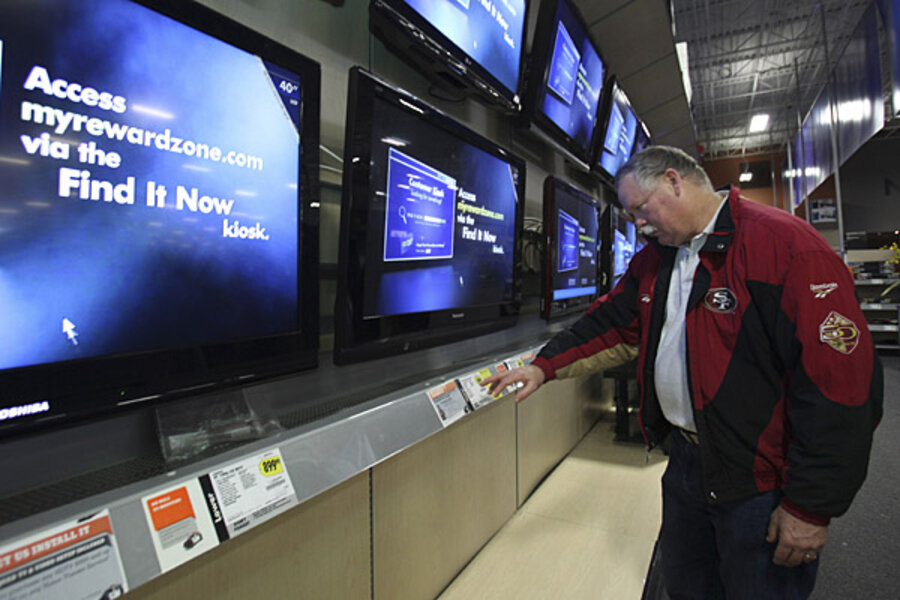Will the Super Bowl save energy?
Loading...
One benefit of 111.3 million people simultaneously consuming the same thing is that they're not consuming a vast multitude of other things.
That might explain why residential electricity use dropped as much as 5 percent below average levels during last year's Super Bowl, according to a study by Opower, a company that develops energy-monitoring tools for utility companies.
The Arlington, Va., firm analyzed electricity usage across 145,000 US households on Feb. 5, 2012, comparing the data to similar Sundays in January and February 2012.
"[W]hen the game kicks off," the study found, "electricity usage plummets."
The Super Bowl, Opower's theory goes, distracts us from the kilowatt-chugging chores we typically reserve for Sundays. Instead of doing laundry, running the vacuum cleaner or cooking dinner, we're glued to our big-screen TVs and stuffing our faces with pizza and buffalo wings.
But wait, you say, those flickering plasma screens collectively consume more than 11 million kilowatt-hours over the course of the game. That's the same amount of power generated by 10 medium-sized coal-fired power plants, according to General Electric.
Still, the total decrease in US home electricity usage during the Super Bowl is greater than three times the amount of energy consumed by all the TVs showing it, Opower says.
And while energy consumption is higher in some places before the game – possibly due to hosts cooking and cleaning ahead of their guests' arrival – Opower says the drop during the game more than compensates.
"Super Bowl Sunday does not simply reduce usage during a certain segment of day," the study found. "It is also, as a result of the exceptional game-time contraction in consumption, an overall net reducer of daily residential energy use."
Much of the savings can be attributed to what Opower calls "TV-pooling." Many people now watch their favorite show online and pass their commute with earbuds placed firmly in meatus acusticus. Not so with the Super Bowl. It is one of America's few remaining collective experiences, as friends and families gather to watch the game together. In 2011, 45 percent of Super Bowl viewers said they would watch the game with others, according to a Nielsen poll.
An experienced shared, means energy saved. Ten people watching one TV is more efficient than 10 people watching 10 TVs.
Opower's study only looks at residential energy use. What the net energy change looks like outside of the home is a more difficult question. What about the gas people consuming getting to and from Super Bowl watching parties? What about the businesses cooking and cleaning for their customers? It's possible, albeit difficult to exactly discern, that the total energy consumption on Super Bowl Sunday is above average.





